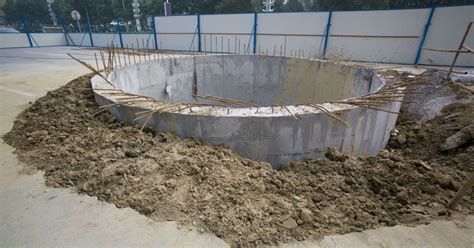compacting soil after excavation Learn how soil compaction is used to densify soil and reduce void space, and how different types of equipment are suitable for different soil types. Find out why soil compaction is crucial for construction projects and how to . Learn how to improve soil health and permeability for riparian restoration projects. Find out how to test, decompact, and amend soil using various tools and methods.
0 · Understanding Backfill Compaction Requirements
1 · The Importance of Soil Compaction in Construction
2 · Soil Compaction: Methods, Meaning, and Effects
3 · Soil Compaction Handbook
4 · SOIL COMPACTION AND STABILITY
5 · Proper Subgrade Prep
6 · How to Compact Soil After Excavation: Your Step
7 · Fundamentals of Soil Compaction
8 · Excavation and Backfilling of Soil – Work Sequence and Procedure
9 · Excavation and Backfilling of Soil
10 · Backfilling Trenches and Other Excavations
11 · 4
A mini excavator is a tool that provides a lot of power and reliability in a small package. This compact vehicle is capable of matching larger vehicles, all while being easy to operate, conveniently sized, and compatible with various attachments that let it accomplish an impressive amount of tasks.

Compaction after excavation is the process of pressing down loosened soil to eliminate air pockets and increase soil density. This ensures that the ground can support structures and prevents future issues like settling, erosion, or water pooling.Learn about soil compaction, its types, methods, and effects on soil types and construction .Learn the sequence, procedure and quality checks for excavation and backfilling of soil for . Learn how soil compaction is used to densify soil and reduce void space, and how different types of equipment are suitable for different soil types. Find out why soil compaction is crucial for construction projects and how to .
After soil is backfilled into a trench, the loose material is compacted using some .Learn the basics of soil compaction and stability, including the effects of moisture content, .Learn how soil compaction is achieved by applying mechanical energy to reduce voids ratio . Compaction after excavation is the process of pressing down loosened soil to eliminate air pockets and increase soil density. This ensures that the ground can support .
Learn about soil compaction, its types, methods, and effects on soil types and construction projects. Find out how to identify and classify soil, and how to achieve optimal density and . Backfilling happens after excavation, when the soil is compacted back into the trench or foundation. It is used to help protect foundations, roadways, walkways and other .
Understanding Backfill Compaction Requirements
Learn about soil compaction, the practice of applying mechanical effort to densify soil by reducing void space. Find out the factors, types and effects of soil compaction, and how . Backfilling is the process of putting a mixture of soil, rocks or stones back into a trench or foundation after excavation, typically to bury a pipe. Compact proper backfill to .Learn the sequence, procedure and quality checks for excavation and backfilling of soil for foundation and trench construction. Find out the materials, tools, drawings and safety . Learn how soil compaction is used to densify soil and reduce void space, and how different types of equipment are suitable for different soil types. Find out why soil compaction is .
After soil is backfilled into a trench, the loose material is compacted using some mechanical means, such as a compactor, an excavator, or a "jumping jack"-type compactor. .Learn the basics of soil compaction and stability, including the effects of moisture content, compactive effort, and soil classification. Find out how to achieve 92 percent compaction and .
Learn how soil compaction is achieved by applying mechanical energy to reduce voids ratio and increase shear strength. Find out the factors affecting compaction, such as water content, soil . Compaction after excavation is the process of pressing down loosened soil to eliminate air pockets and increase soil density. This ensures that the ground can support .Learn about soil compaction, its types, methods, and effects on soil types and construction projects. Find out how to identify and classify soil, and how to achieve optimal density and .
Backfilling happens after excavation, when the soil is compacted back into the trench or foundation. It is used to help protect foundations, roadways, walkways and other . Learn about soil compaction, the practice of applying mechanical effort to densify soil by reducing void space. Find out the factors, types and effects of soil compaction, and how . Backfilling is the process of putting a mixture of soil, rocks or stones back into a trench or foundation after excavation, typically to bury a pipe. Compact proper backfill to .
Learn the sequence, procedure and quality checks for excavation and backfilling of soil for foundation and trench construction. Find out the materials, tools, drawings and safety . Learn how soil compaction is used to densify soil and reduce void space, and how different types of equipment are suitable for different soil types. Find out why soil compaction is .
The Importance of Soil Compaction in Construction
After soil is backfilled into a trench, the loose material is compacted using some mechanical means, such as a compactor, an excavator, or a "jumping jack"-type compactor. .
Learn the basics of soil compaction and stability, including the effects of moisture content, compactive effort, and soil classification. Find out how to achieve 92 percent compaction and .

Soil Compaction: Methods, Meaning, and Effects
Soil Compaction Handbook
Browse through Kubota's Compact Excavators inventory, filter search by features to find the best fit for you, or even build your own. Then find a dealer close by with your desired product!
compacting soil after excavation|Soil Compaction Handbook